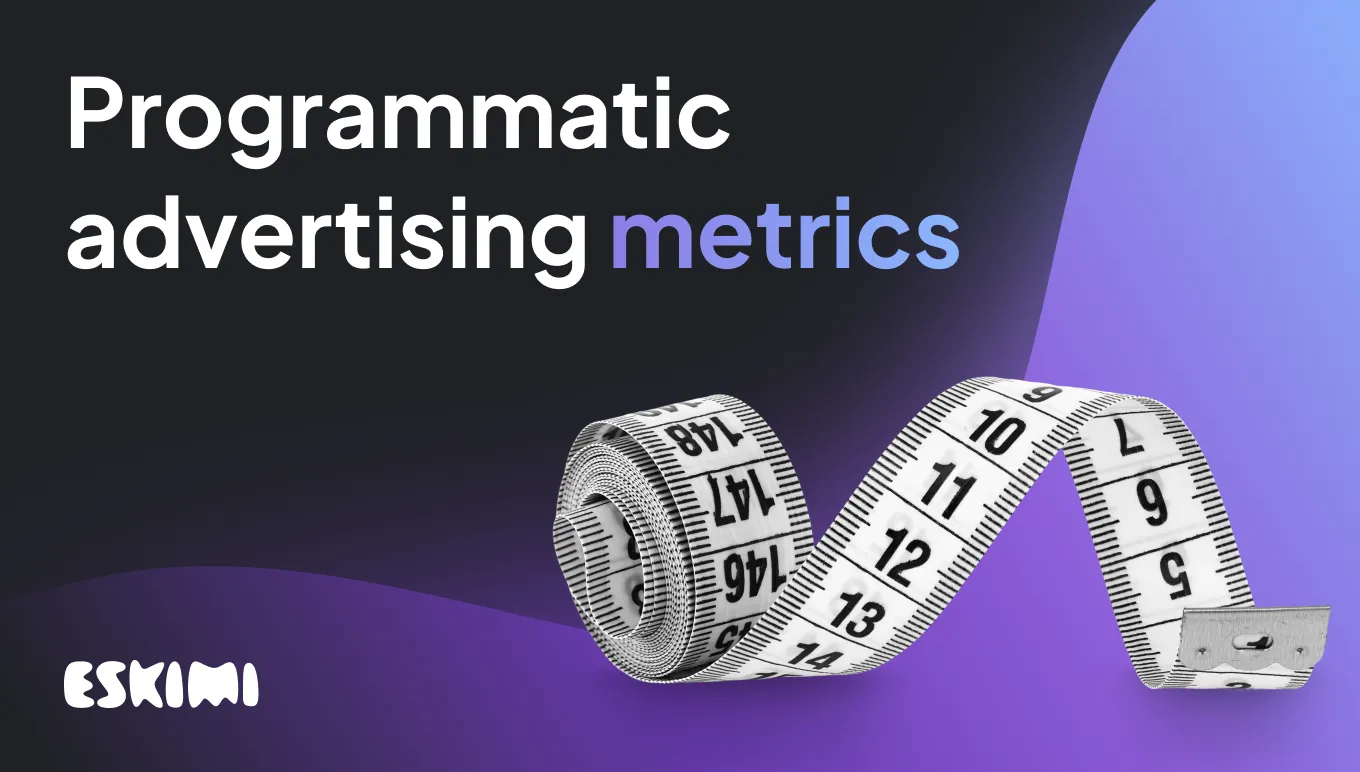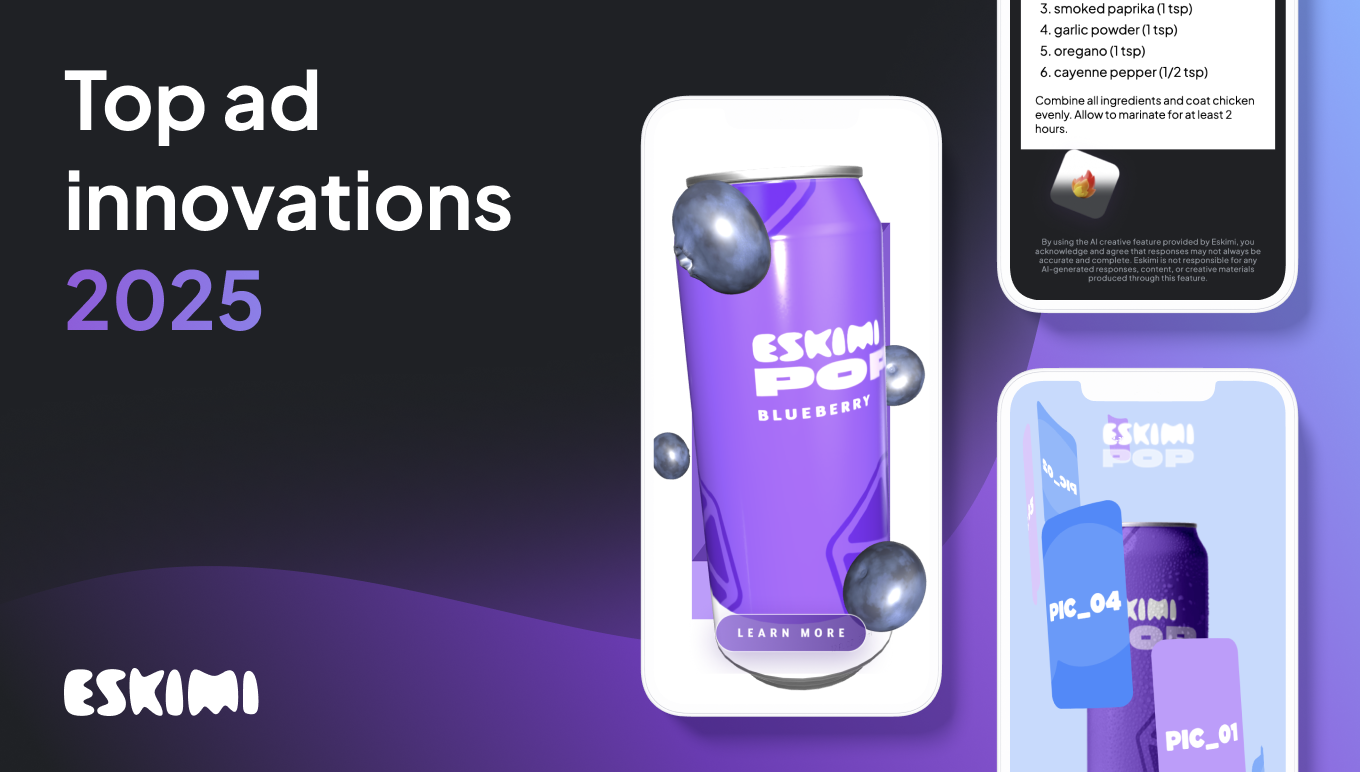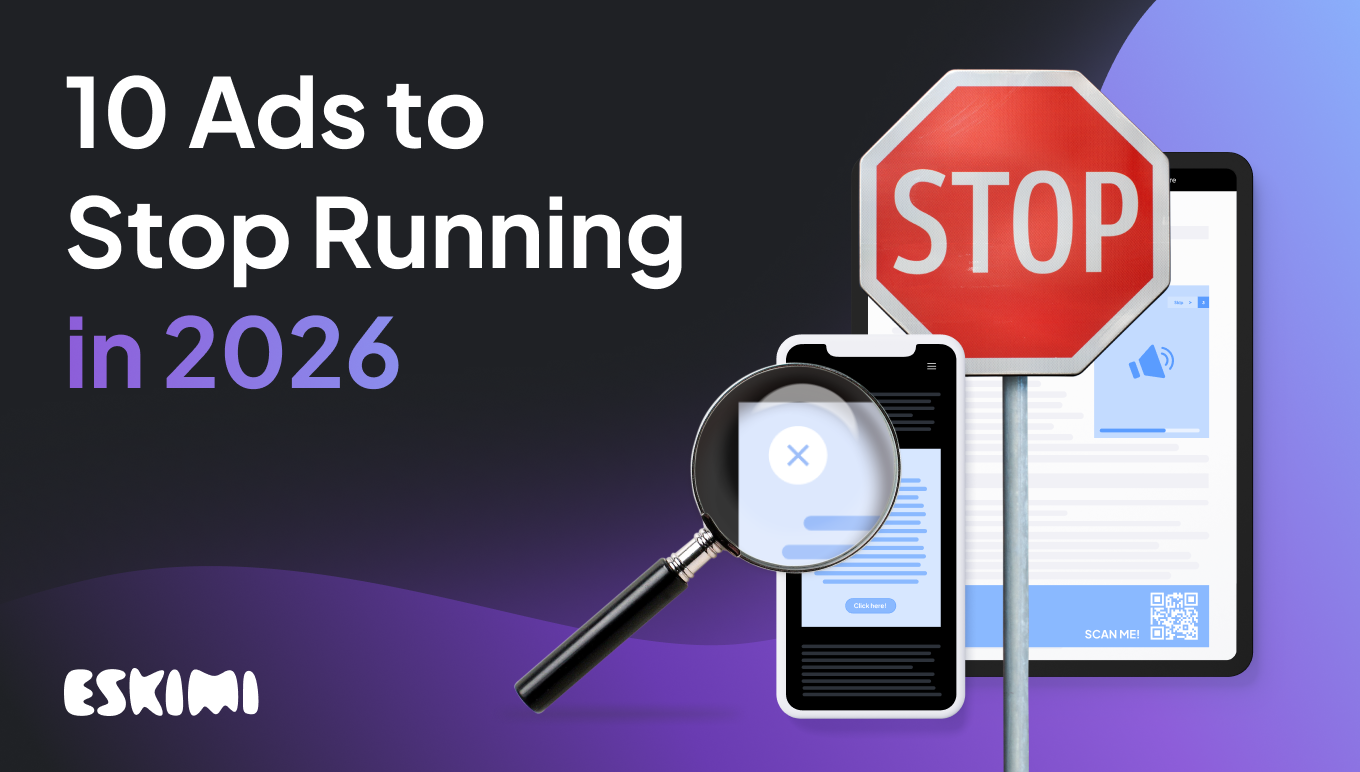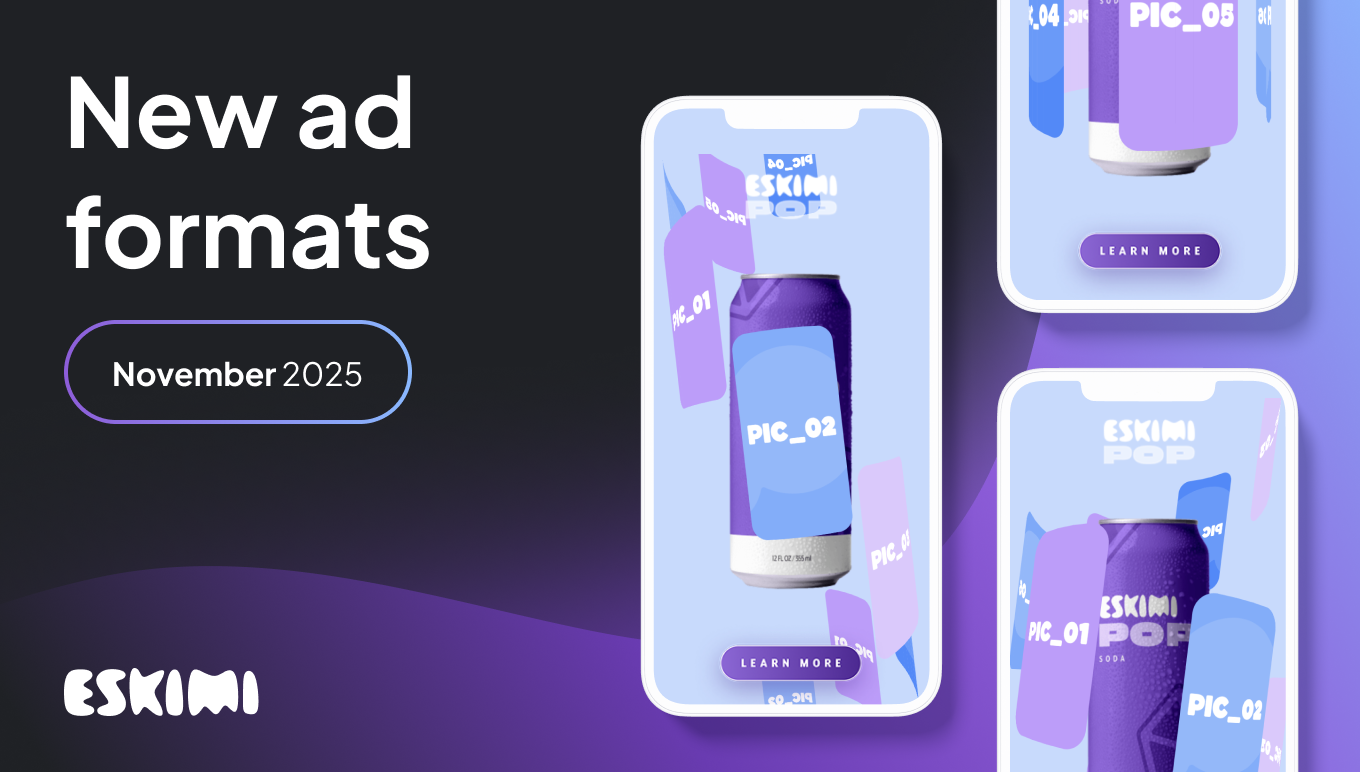Programmatic advertising metrics: Everything you need to know

Marketing without metrics is just guesswork. You can't measure advertising effectiveness, your brand health, or even set your Key Performance Indicators (KPIs).
Luckily, there's no shortage of metrics available in programmatic advertising — from impressions and conversions to dwell time and attention scoring. These metrics offer a granular view of your campaign's performance, helping you understand what's working, what needs improvement, and where to optimize.
But here's the catch: more metrics also mean more complexity. It's easy to get lost in the data unless you know what to track, how to interpret it, and how to act on it.
That's why we've created this guide. We'll break down the most critical programmatic KPIs so that you can run smarter, more effective ad campaigns.
Why metrics matter in programmatic advertising
Metrics are essential for evaluating and improving programmatic ad campaigns. They help you:
- Measure campaign performance: Metrics show how your ads are performing in terms of impressions, clicks, conversions, and other key outcomes.
- Optimize ad campaigns: You can adjust bids, creatives, targeting, and frequency based on what the data shows.
- Track spend efficiency: Metrics like CPM, CPC, and CPA help you understand how efficiently you're using your budget.
- Compare channels and formats: Metrics allow you to evaluate which platforms, placements, and ad formats are delivering the best results.
- Report on results: Accurate metrics are necessary for reporting to clients or stakeholders and justifying ad spend.
- Make data-driven decisions: Without metrics, decisions are based on assumptions rather than evidence.
Let's dive in.
Impressions
Ad impressions refer to the number of times your ad is displayed on a user's screen, regardless of whether it is seen or clicked.
Use case: Ad impressions measure campaign reach — how many times your ad was delivered. They're significant in brand awareness campaigns.
Keep in mind:
- High impressions don't mean high visibility or impact.
- Consider viewability and frequency alongside impressions to evaluate quality reach.
- Use capping to avoid excessive impressions for the same user.
Reach
The total number of unique users who were exposed to your ad at least once during a campaign.
Use case: Reach is a top-funnel metric used to measure how many individual people your ad campaign has touched. It helps determine whether you're effectively hitting your target audience.
Keep in mind:
- Reach tells you how wide your message is spreading.
- Critical for brand awareness, product launches, and market expansion campaigns.
- Reach helps you measure audience saturation and campaign scale.
Frequency
Frequency is the average number of times an individual user sees your ad during a campaign.
Formula: Total impressions ÷ reach
Use case: Frequency shows how often your ad is being shown to each unique user. It can help you balance between visibility and annoyance.
Keep in mind:
- Frequency helps manage brand recall and ad fatigue.
- Should be prioritized in brand awareness and retargeting phases, when evaluating campaign saturation, and when when planning multi-touch campaigns over several weeks.
Clicks
The total number of times users clicked on your ad, typically to visit a landing page, open a website, or trigger another action.
Use case: Clicks measure initial engagement with an ad. They are commonly used in campaigns aimed at driving traffic, awareness, or lead acquisition.
Keep in mind:
- Clicks represent active interest — users are choosing to engage with your ad and explore more.
- Clicks are used to calculate other important metrics like click-through rate (CTR) and cost per click (CPC).
- Click fraud and accidental clicks (especially on mobile) can inflate numbers — consider using anti-fraud filters or third-party verification tools.
- Focus not just on how many clicks you’re getting, but what kind of users are clicking — are they converting, engaging, or bouncing?
Viewability rate
The viewability rate is the percentage of impressions that meet industry standards for being considered "viewable."
Use case: Viewability helps you understand whether your ads had a chance to be seen.
Keep in mind:
- A viewability rate below 50% typically indicates poor inventory quality, including issues such as poor ad placement, slow page loading, low-quality content, and even ad fraud.
- Higher viewability often correlates with stronger performance (especially in awareness and video campaigns).
- The viewability rate metric enables optimization by excluding low-viewability domains or placements.
Click-through rate (CTR)
The click-through rate (CTR) indicates the percentage of impressions that result in user clicks on a specific link. CTR indicates how engaging your ad is. A low CTR could mean poor creative, irrelevant placement, or weak audience targeting.
Formula: Clicks ÷ impressions × 100
Use case: Specifically tracks clicks on a link, indicating interest in a particular call to action or piece of content.
Keep in mind:
- A high CTR typically means your creative, messaging, and targeting are well-aligned with your audience.
- A low CTR may indicate issues such as ad fatigue, poor visual design, weak call-to-action (CTA), or irrelevant audience targeting.
- CTR is often used as a top- or mid-funnel KPI to assess engagement before conversion.
- CTR should not be used in isolation. A high CTR with a low conversion rate could mean misleading or unqualified clicks.
- Combine CTR with bounce rate, conversion rate, and time on site to assess the quality of traffic.
- CTR can vary significantly by format, audience, device, and placement — always compare within the same context.
Engagement rate
The engagement rate is the percentage of users who interacted with your ad out of the total number who viewed it. Engagement can include actions like hovering, expanding, swiping, tapping, pausing a video, or clicking — depending on the ad format.
Formula: Engagements ÷ impressions × 100
Use Case: Measures active interaction with the ad, especially for rich media, playable ads, native, or interactive video formats.
Keep in mind:
- A high engagement rate indicates that the creative is relevant and attention-grabbing.
- Useful for mid-funnel ad campaigns focused on education, interest, and product exploration.
- The definition of engagement”varies by platform and format, so make sure you understand what actions are counted.
- Engagement rate can be a good predictor of downstream conversion, especially in formats that drive user intent (e.g., swipe-throughs or carousels).
Conversion rate (CVR)
Conversion rate is the percentage of users who completed a desired action (conversion) after clicking or viewing an ad.
Formula: Conversions ÷ visitors × 100
Use Case: Conversion rate is a key performance metric that tells you how effectively your ads are driving users to complete a specific goal — such as making a purchase, signing up, filling a form, or downloading an app.
Keep in mind:
- A high CTR with low CVR often means the ad is misleading or attracting the wrong audience.
- A low CTR with high CVR may mean your targeting is spot-on, but creative could be improved to scale results.
- CVR reflects the quality of your traffic, not just volume.
Cost per mille (CPM)
Cost per mille is the cost to serve 1,000 impressions, regardless of clicks or conversions.
Formula: Total ad spend ÷ total impressions × 1,000
Use Case: CPM is the most common pricing model in programmatic advertising, especially for brand awareness and reach-focused campaigns. It measures how much you're paying for every 1,000 ad impressions.
Keep in mind:
- Low CPM doesn’t always mean good value. Cheap inventory may have low viewability or poor user engagement.
- Combine CPM with viewability rate, CTR, and attention metrics to assess whether the impressions are actually effective.
eCPM (effective cost per mille)
The effective cost per 1,000 impressions, calculated regardless of the actual buying model (CPM, CPC, CPA, etc.). It reflects how much revenue or cost is being generated per 1,000 ad impressions.
Formula: Total earnings or cost ÷ total impressions × 1,000
Use Case: eCPM is used by both advertisers and publishers to standardize campaign performance across different pricing models. It helps answer:
- How much am I paying per 1,000 impressions? (for advertisers)
- How much revenue am I earning per 1,000 impressions? (for publishers)
Keep in mind:
- Allows comparisons between campaigns that may be running on different models (e.g., CPC vs CPA).
- Helps advertisers evaluate cost-efficiency of media buys.
- For publishers, it’s a core monetization metric showing the value of their inventory.
- eCPM can fluctuate heavily based on targeting, competition, seasonality, and creative performance.
Cost per click (CPC)
Cost per click shows how much you pay per click on your ad.
Formula: total ad spend ÷ number of clicks
Use case: CPC measures the cost efficiency of driving traffic to your website, landing page, or app. It’s a common metric in advertising campaigns focused on generating visits and initiating customer journeys.
Keep in mind:
- CPC tells you how much you're paying to generate interest and attract users to engage beyond the ad impression.
- It reflects how competitive your targeting criteria are. More competition typically means higher CPC.
- Analyze CPC together with conversion rate (CVR), bounce rate, and CPA to determine the real value of the traffic.
Cost per acquisition (CPA)
Cost per acquisition is the average cost to generate one conversion like a purchase, signup, app install, lead, or any other aquisition defined as the advertising campaign goal.
Formula: Total ad spend ÷ number of conversions
Use case: CPA is a bottom-funnel performance metric that shows how efficiently your campaign is driving actual business results. It’s essential for advertisers focused on ROI and lead generation.
Keep in mind:
- High CPA might signal problems with targeting, conversion funnel, ad creative, or landing page.
- Low CPA could be a positive sign, however if the conversions are low-intent or unqualified, they may cost less but provide little value.
- For a bigger picture, evaluate CPA against customer lifetime value (CLV). Spending $50 to acquire a customer is ok if they bring $500 in lifetime revenue.
Video completion rate (VCR)
VCR is the percentage of users who watched your video ad all the way through, from start to finish.
Formula: Completed video views ÷ total video starts × 100
Use case: VCR measures engagement and effectiveness of your video creative, specifically how compelling it is to hold a viewer’s attention until the end.
Keep in mind:
- Should be evaluated alongside viewability and engagement metrics for a fuller picture of the marketing campaign.
- High VCR means your content is relevant to your target audience.
Win rate
Win rate is the percentage of bids that your DSP (demand-side platform) successfully wins in the ad auction.
Formula: Won impressions ÷ total bids submitted × 100
Use case: Win rate tells you how competitive your bids are in programmatic auctions. It helps you understand whether your bidding strategy is effective enough to secure ad placements.
Keep in mind:
- A low win rate means you’re bidding too low or targeting too narrow an audience.
- A high win rate with poor performance could mean overbidding or poor targeting.
- Win rate can help fine-tune budget efficiency, bid strategies, and audience reach.
- Should be monitored alongside eCPM, CTR, and conversion metrics to understand cost-effectiveness.
- It can help you troubleshoot under-delivery issues in programmatic campaigns.
Return on ad spend (ROAS)
ROAS is a metric that shows how much revenue you earn for every dollar spent on advertising.
Formula: Revenue form ads ÷ total ad spend
Why it matters: ROAS is the ultimate performance metric. It tells you if your campaigns are profitable.
Use case: ROAS is the go-to metric for measuring campaign profitability. It tells you whether your advertising is bringing in more money than it costs — simple as that.
Keep in mind:
- ROAS is essential for eCommerce, lead generation, and any campaign where revenue is directly trackable.
- ROAS is only as accurate as your conversion tracking setup. Make sure revenue attribution is correctly implemented.
- High ROAS isn’t always sustainable — early success may not scale.
- Doesn’t reflect lifetime value (LTV) — may undervalue campaigns that bring high-value long-term customers.
- Helps evaluate profitability of ad channels and guide budget allocation across different campaigns or platforms.
Attention metrics
But as much as traditional metrics tell you, it's still only part of the story. Just because an ad was served or clicked doesn’t mean it was actually seen or remembered.
That’s where attention metrics come in. Instead of simply measuring delivery or interaction, they measure human attention: how long someone actually looked at an ad, how engaged they were, and how likely they are to recall the message.
With ad fatigue, banner blindness, and ad blockers on the rise, measuring ad advertising for attentionis becoming more and more important to measure success of your programmatic campaigns.
That's exactly why Eskimi partnered with Lumen, a global leader in attention measurement. Key attention metrics are now available:
- Attention per mille (APM): The amount of attention generated per 1,000 impressions in seconds.
- View time: The actual number of seconds a user actively looks at an ad.
- View rate: The number of impressions where an ad was seen compared to the number of times an ad was shown.
Don't forget about brand metrics
Programmatic campaigns thrive on real-time data — clicks, conversions, attention — but good performance in programmatic advertising alone doesn’t build a brand. Nor does it give you the entire picture of consumer behavior when it comes to your products.
To understand how your advertising is actually shaping perception, you need to look beyond immediate results. That’s where brand metrics come in. These metrics can provide valuable insights like:
- Are people aware of your brand?
- Do they remember your ad?
- Has their opinion of your brand changed after seeing your digital advertising?
While harder to measure than CTR or CPM, brand metrics are essential for evaluating long-term impact of your advertising. For example, programmatic ads from your online advertising campaign might not drive instant conversions. However, your digital ads could significantly boost brand awareness or ad recall and that can influence future buying decisions.
At Eskimi, we support advertisers with multiple ways to track brand effectiveness, including brand lift studies, campaign-based awareness measurement, and custom brand surveys.
How to set your programmatic advertising KPIs?
With so many metrics available, it’s easy to get lost in the data. The key is to focus on essential KPIs that align with your campaign objectives.
Start with the goal
Define what you want the campaign to achieve.
- Brand awareness: Focus on metrics like impressions, reach, viewability, and brand lift.
- Engagement: Track clicks, CTR, video completion rate, and attention metrics.
- Conversions or sales: Use CPC, CPA, ROAS, and conversion rate.
Choose metrics that reflect that goal
Don’t track everything, track what matters:
- For upper-funnel: prioritize exposure and brand recall.
- For mid-funnel: measure engagement and purchase intent.
- For lower-funnel: focus on performance and cost-efficiency.
Set realistic benchmarks
Use historical data, industry standards, or platform averages to guide your targets. A KPI should be:
- Measurable
- Time-bound
- Tied directly to your campaign objective
Balance short-term performance with long-term brand health
Don’t just optimize for clicks and conversions in your digital advertising. Include attention and brand metrics to understand the full impact of your advertising, both immediate and long term.
Review and adjust regularly
Programmatic allows for real-time optimization. Monitor your KPIs during the campaign and tweak as needed to improve performance.
Ready to take your programmatic campaigns to the next level?
Need help choosing the right metrics or tools? Talk to our team and let’s build smarter campaigns together.
Level Up Your Advertising with Eskimi
- Reach 96% of Open Web
- 2,500+ Targeting Options
- 100% Managed or Self-Service
- In-House Creative Studio Team
- Display, Video, In-Game & CTV
- #1 Rated DSP on G2





